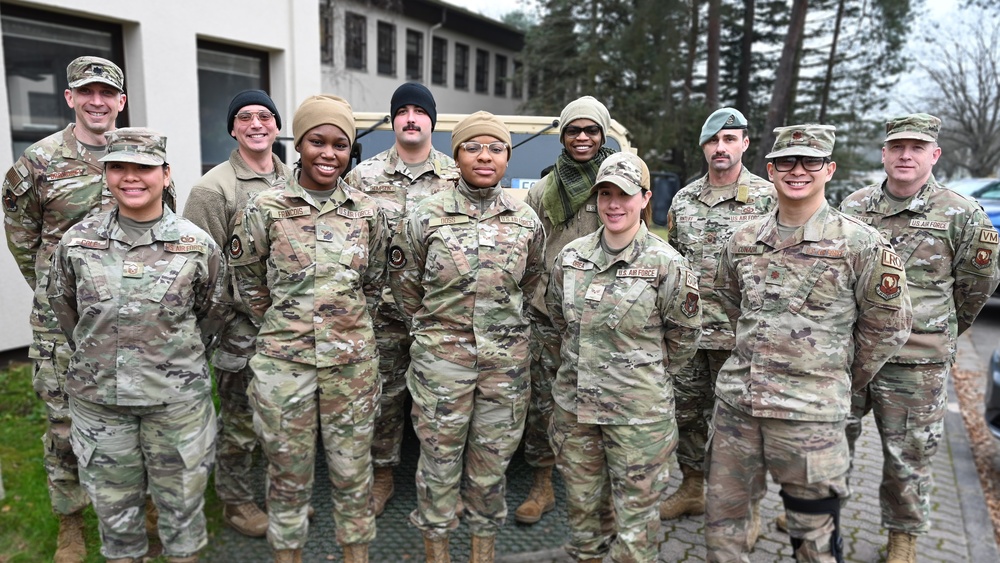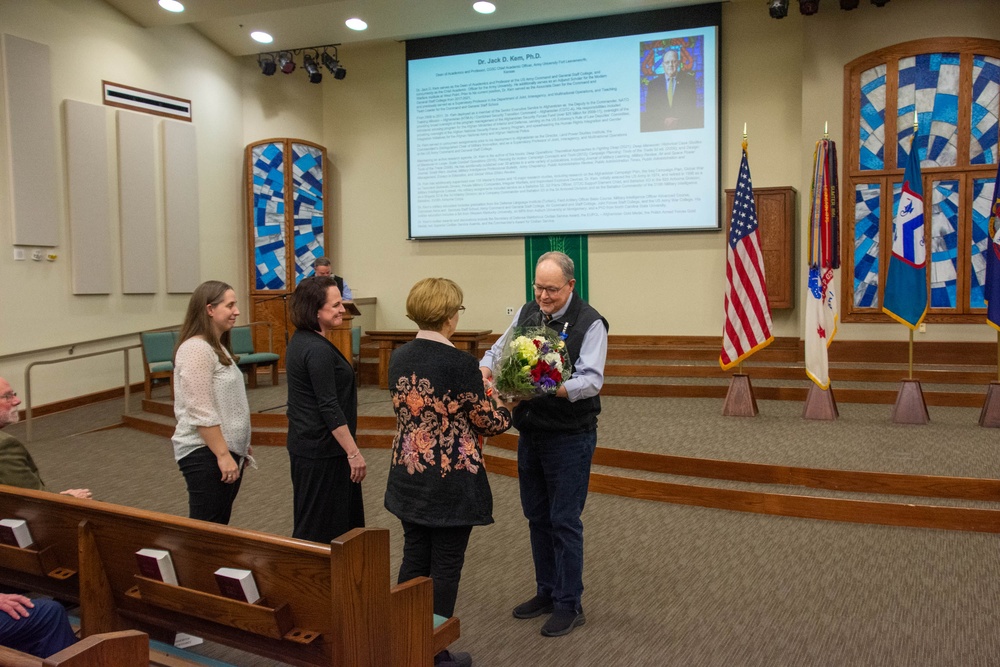DVIDS – News – F-16 Fighting Falcon display at Arnold AFB honors Harpe
ARNOLD AIR FORCE BASE, Tenn. – The significance of the static aircraft displayed outside the Main Gate and Gate 2 of Arnold Air Force Base goes beyond decorative purposes.
The displays symbolize the importance of the work performed across Arnold Engineering Development Complex, headquartered at Arnold AFB. Testing conducted within AEDC facilities played a role in either the development or advancement of each type of aircraft exhibited.
But there is an additional meaning behind the displays. Each serves to honor the memory of those who sacrificed. They are dedicated to members of the U.S. military who gave their lives in service to the country.
The displays are publicly accessible, and it’s not uncommon to see members of the community or other visitors stop for an up-close look at the aircraft. Many have likely taken the time to read the commemorative plaques installed in front of each to learn about those the displays honor. However, others who catch a glimpse of the planes while passing by Arnold on Wattendorf Memorial Highway may be unaware of what the displays represent.
This is the third in a series of six stories focused on those to whom the displays are dedicated. Information on work performed at Arnold to field the safest and most effective version of each aircraft displayed will also be provided.
This feature focuses on the F-16 Fighting Falcon displayed at Gate 2, dedicated in memory of Maj. Gen. Winfield S. Harpe during a June 26, 2010, ceremony.
Harpe died Dec. 5, 1988, when his aircraft crashed during a training mission in Madrid, Spain. He was the highest ranking active-duty officer to die in an F-16.
At the time of his death, Harpe was commander of the 16th Air Force, U.S. Air Forces in Europe, headquartered at Torrejon Air Base in Spain. In that role, Harpe was responsible for U.S. air forces in Spain, Italy, Greece and Turkey.
“My father’s sudden death was a great loss for us and the Air Force, with the only solace being that he died doing what he enjoyed most and while serving his country,” Harpe’s son Randy said during the 2010 ceremony at Arnold.
Harpe was a command pilot with more than 5,000 flying hours. Decorations and awards he earned throughout his career include the Distinguished Service Medal, Silver Star with oak leaf cluster, Legion of Merit, Meritorious Service Medal, Air Force Medal with 20 oak leaf clusters, Distinguished Flying Cross with five oak leaf clusters, Joint Service Commendation Medal and Air Force Commendation Medal with oak leaf cluster.
Harpe was born in 1937 in Thomaston, Georgia. He earned his bachelor’s degree in economics from Florida State University in 1959. He was also a distinguished graduate of the Reserve Officer Training Corps and was commissioned as a second lieutenant the same year he graduated from FSU. He attended primary flying training at Malden Air Force Base, Missouri, and basic flying training at Craig Air Force Base, Alabama, where he earned his wings in September 1960. He was also a distinguished graduate of Squadron Officer School in 1965.
The majority of Harpe’s career was spent in fighter aircraft. After initial flying duties in the KC-135 Stratotanker at Beale Air Force Base, California, he received transition training to the F-105 Thunderchief. He was assigned to the 388th Tactical Fighter Wing at Korat Royal Thai Air Force Base in Thailand and, in 1966 and 1967, flew 100 combat missions over North Vietnam. Many of the missions took Harpe into the heavily defended Hanoi area.
In September 1967, Harpe returned to the U.S. and was assigned to McConnell Air Force Base, Kansas, as an F-105 instructor pilot with the 23rd Tactical Fighter Wing. There, he trained pilots for F-105 duty in combat and served an extended temporary tour of duty flying F-4 Phantoms at Davis-Monthan Air Force Base, Arizona.
Harpe graduated from Air Command and Staff College in August 1970 and was subsequently assigned as the F-86 Sabre advisor to the Royal Thai Force at Takhli Royal Thai Air Force Base in Thailand. The only American military individual at Takhli, Harpe in 1972 negotiated with the Thai military the details of the bed down of a full U.S. Air Force fighter wing at the base.
During his two-year tour of duty in Thailand, Harpe, in addition to the F-86, also flew the C-47 Skytrain, T-28 Trojan, T-33 Shooting Star and T-41 Mescalero.
Harpe was assigned to the 354th Tactical Fighter Wing in August 1972 and received transition training in the A-7 Corsair II at Myrtle Beach Air Force Base, South Carolina. Afterward, he returned to Thailand for combat operations from Korat Royal Thai Air Force Base. During two extended temporary duty tours there, he again flew missions over Hanoi in North Vietnam, as well as missions over Cambodia, Laos and the Republic of Vietnam.
In the summer of 1974, Harpe transferred to Randolph Air Force Base, Texas, as assistant for personnel plans, programs and analysis at the Air Force Military Personnel Center. Three years later, he entered the Air War College. After graduating in late 1978, Harpe assumed command of the 14th Flying Training Wing at Columbus Air Force Base, Mississippi. He graduated from the Institute of Management at Northwestern University in 1979.
Harpe returned to Randoph Air Force Base in June 1980 and initially served as vice commander of the Air Force Military Personnel Center. Less than two years later, Harpe became commander of the U.S. Air Force Recruiting Service. He was appointed deputy chief of staff for technical training at Headquarters Air Training Command, also located at Randoph AFB, in September 1983. Also in 1983, Harpe graduated from the Harvard University School of Government program for senior managers.
The following year, he was assigned as director of personnel programs, Office of the Deputy Chief of Staff, Manpower and Personnel at the Air Force headquarters in Washington, D.C.
In October 1986, Harpe became assistant deputy chief for personnel. He assumed his role as commander of the 16th Air Force in July 1987.
“My father was true blue Air Force,” Randy Harpe said during the 2010 dedication. “He lived it, loved it and promoted it as the best branch of the military. He was a proponent of research, development and testing, and spoke excitedly of new technologies, some of which were surely evaluated here at Arnold Air Force Base.”
The F-16 can certainly be counted among these technologies. A compact and maneuverable fighter aircraft capable of performing air-to-air and air-to-surface attack missions, the F-16 was deployed in early 1979.
AEDC support of the F-16 program began with the YF-16, the prototype of the Fighting Falcon. The YF-16 had been flying in AEDC wind tunnels several years before it made its inaugural flight test at Edwards Air Force Base, California, in February 1974.
The version of the YF-16 that flew in AEDC tunnels in the early 1970s was a scale model and, at the time, was in a fly-off with the YF-17 for an Air Force lightweight fighter contract. The YF-17, as well as the jet engines that powered both fighters, was also tested at Arnold.
The YF-16 was selected as the Air Combat Fighter and designated as the F-16.
In addition to the testing conducted throughout the Lightweight Fighter Program, Arnold supported a pair of technology efforts involving the F-16 – the Control Configured Vehicle program and the Advanced Fighter Technology Integration program.
The F-16A, a single-seat aircraft, first flew in December 1976. During the following year, engineers conducted store separation testing on various external payloads from the F-16 in a wind tunnel at Arnold. These payloads included air-to-ground munitions, air-to-air missiles and auxiliary fuel tanks. This work continued into 1978, when store separation testing was conducted on an air-to-surface missile from the F-16.
The first operational F-16A was delivered to the 388th Tactical Fighter Wing at Hill Air Force Base, Utah, in January 1979. That year, several tests sponsored by the Air Force Aerospace Medical Research Laboratory at Wright-Patterson Air Force Base, Ohio, were conducted at Arnold. This work was performed to predict the aerodynamic forces that would be encountered by an F-16 pilot who had to make an emergency ejection. The tests were also designed to predict cockpit conditions following canopy loss. These tests were also used to obtain data for use in designing windblast protective equipment for the pilots of F-16s and other aircraft.
In 1982, AEDC conducted an external loads effects test on the F-16 inlet. Five years later, tests were conducted in the wind tunnel at Arnold to gather data on the aerodynamic forces affecting a small female crew member who ejects from an F-16. Female aircrew members, who at the time were limited to flight surgeons and flight test engineers, sit in the Advanced Concept Ejection Seat installed in several aircraft, including the F-16.
A test performed in 1997 evaluated the effects of variations of aircraft configuration, angle of attack, load factor, altitude, store center of gravity location, ejector characteristics and store roll release attitude. Two years later, the F-16 was used in a Pressure Sensitive Paint demonstration test conducted in an Arnold AFB wind tunnel. The test was conducted to validate PSP techniques for measuring aerodynamic loads.
AEDC has also extensively supported the jet engines that serve as the F-16 power plants, as these engines spent considerable time in AEDC test cells over the years. This work includes a 12-month program that concluded in August 2001 in which an engine performed more than 3,500 sea level accelerated mission tests, or AMT, and nearly 1,000 RAM AMT cycles in Arnold AFB test cells. AMTs are used to rapidly run an engine, allowing for the simulation of several years of engine life in only a short period of time. This aids in the identification of issues well before they occur in normal use. RAM AMT is a variation of AMT developed by the Air Force to provide additional stress on an engine to more closely simulate actual flight conditions.
The purpose of the program that concluded in August 2001 was to obtain data on engine performance, durability and reliability during simulated missions. The program also included fatigue testing to further validate engine hardware integrity.
Subsequent AMTs on F-16 powerhouses followed in the early 2000s.
Then-AEDC Vice Commander Col. Eugene Mittuch said during the 2010 dedication ceremony that the F-16 display at Arnold AFB helps ensure Harpe’s legacy and contributions to the Air Force will not be forgotten.
“America needs heroes – not the movie heroes we see coming out of Hollywood, but great Americans from small towns across the country, like Thomaston, Georgia,” Mittuch said. “Maj. Gen. Winfield S. Harpe was one of those great Americans, and this F-16, which sits just off Interstate 24 and will be visited by hundreds of people a year, will stand as a testament to his memory and to all those who have given their lives building the greatest Air Force the world has ever known.”
The next article in the series will feature the F-14 Tomcat dedicated to Lt. Kara Hultgreen.
| Date Taken: | 10.02.2023 |
| Date Posted: | 10.02.2023 16:02 |
| Story ID: | 454921 |
| Location: | ARNOLD AIR FORCE BASE, TN, US |
| Web Views: | 3 |
| Downloads: | 0 |
PUBLIC DOMAIN
This work, F-16 Fighting Falcon display at Arnold AFB honors Harpe, by Bradley Hicks, identified by DVIDS, must comply with the restrictions shown on https://www.dvidshub.net/about/copyright.


 Private Internet Access gives you unparalleled access to thousands
of next-gen servers in over 83 countries and each US state. Your
VPN experience will always be fast, smooth, and reliable.
Private Internet Access gives you unparalleled access to thousands
of next-gen servers in over 83 countries and each US state. Your
VPN experience will always be fast, smooth, and reliable.

